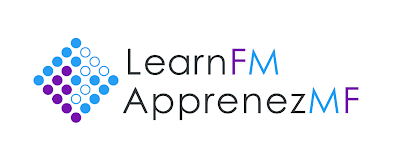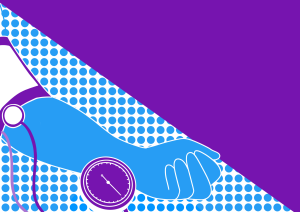Objectives
By the end of Family Medicine Clerkship, students will be able to:
1. Describe and demonstrate the appropriate technique for blood pressure assessment.
2. Describe the operator and patient factors that can artificially raise and lower blood pressure.
3. Define how to diagnose hypertension in a family practice setting for different patient groups, and identify the blood pressure targets for these groups.
4. Describe the role of patient determined blood pressure and 24 hour ambulatory blood pressure assessment in diagnosis and monitoring of HTN.
5. Describe the effects of hypertension on end-organs and how to assess a patient for these.
6. Propose an initial diagnostic workup for a patient with a new diagnosis of high blood pressure to determine if there is a secondary cause for hypertension (versus essential hypertension)
7. Define the diagnostic and treatment targets for various groups of patients with high blood pressure.
8. Propose a treatment plan (incorporating non-pharmacologic and pharmacologic options) for a patient with a new diagnosis of high blood pressure
9. Recognize and act on a hypertensive crisis
10. Describe the various drug classes used to treat high blood pressure and their mechanisms of action, side effects, relative cost, and pharmacokinetics
Clinical Cards
Microcases
https://cards.ucalgary.ca/deck/371
References
Recommended Resources Addressing the Objectives
Blood pressure measurement (page 704-707, 708-712. 8 pages total)
Objectives covered: 1,2,4
http://circ.ahajournals.org/content/111/5/697.full.pdf+html
Pickering TG, Hall JE, Appel LJ, Falkner BE, Graves J, Hill MN, et al. Recommendations for blood pressure measurement in humans and experimental animals: part 1: blood pressure measurement in humans: a statement for professionals from the Subcommittee of Professional and Public Education of the American Heart Association Council on High Blood Pressure Research. Circulation 2005 Feb 8;111(5):697-716.
PMID:15699287
CHEP 2014 Guidelines summary (8 pages) *Might change with time
Objectives covered: 3,6,7,8
http://www.hypertension.ca/images/CHEP_2014/2014_CHEPBooklet_EN_HCP1030.pdf
Canadian Hypertension Education Program. 2014 Canadian Recommendations for the Management of Hypertension. 2014; Available at: http://www.hypertension.ca/images/CHEP_2014/2014_CHEPBooklet_EN_HCP1030.pdf. Accessed June/10, 2014.
No Pubmed ID
End organ damage in hypertension (9 pages)
Objectives covered: 5
http://www.ncbi.nlm.nih.gov/pubmed/21191547
Schmieder RE. End organ damage in hypertension. Dtsch Arztebl Int 2010 Dec;107(49):866-873.
PMID:21191547
Secondary arterial hypertension: when, who, and how to screen? (10 pages)
Objectives covered: 6
http://www.ncbi.nlm.nih.gov/pubmed/24366917
Rimoldi SF, Scherrer U, Messerli FH. Secondary arterial hypertension: when, who, and how to screen? Eur Heart J 2014 May 14;35(19):1245-1254.
PMID:24366917
Recognizing and treating hypertensive crises (10 pages) *Might change with time – a bit too much detail on medications but still good
Objectives covered: 9
http://www.ncbi.nlm.nih.gov/pubmed/18257607
Varon J. Treatment of acute severe hypertension: current and newer agents. Drugs 2008;68(3):283-297.
PMID:18257607
Objective 10:
consult SHARC-FM clinical card
Foundational Knowledge
The Calgary Guide – Physiology of the Renin-Angiotension-Aldosterone System (RAAS)
Additional Resources
ABC of hypertension. Blood pressure measurement. Part I (clarifies the relationship between cuff size and BP, among other variables)
Objectives covered: 2
http://www.ncbi.nlm.nih.gov/pubmed/11312235
Beevers G, Lip GY, O’Brien E. ABC of hypertension. Blood pressure measurement. Part I-sphygmomanometry: factors common to all techniques. BMJ 2001 Apr 21;322(7292):981-985.
PMID:11312235
CHEP poster on how to measure blood pressure for clinics and patients
Objectives covered: 1, 2
http://www.hypertension.ca/images/2013_EducationalResources/2013_MeasureBPPoster_EN_HCP1040.pdf
Hypertension in Developing Countries For those who are interested in global health!
http://www.ncbi.nlm.nih.gov/pubmed/22883510
Ibrahim MM, Damasceno A. Hypertension in developing countries. Lancet 2012 Aug 11;380(9841):611-619.
PMID:22883510
Patient Information
CHEP Slideshow for patients on hypertension (educational material for patients)
The Canadian Hypertension Education Program (CHEP) is an innovative knowledge translation program designed to reduce the disease burden of the leading risk for death in Canada. CHEP provides practical, trustworthy, up-to-date knowledge to health care professionals. CHEP is serving as a model that is being adopted in Canada and around the world. The program is operated collaboratively and began in 1999.

